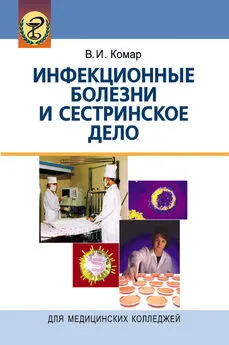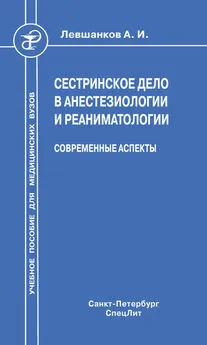Марит Киркеволд - Сестринское дело. Анализ и оценка теорий
- Название:Сестринское дело. Анализ и оценка теорий
- Автор:
- Жанр:
- Издательство:Литагент «Когито-Центр»881f530e-013a-102c-99a2-0288a49f2f10
- Год:2000
- Город:Москва
- ISBN:5-9292-0022-X
- Рейтинг:
- Избранное:Добавить в избранное
-
Отзывы:
-
Ваша оценка:
Марит Киркеволд - Сестринское дело. Анализ и оценка теорий краткое содержание
«Данная книга ставит своей целью дать обзор развития теорий сестринского дела, а также предоставить читателю необходимую базу знаний для того, чтобы он смог воспринимать и оценивать теоретические работы в области сестринского дела. Книга предназначена для студентов сестринских отделений факультетов высших учебных заведений, практикующих медсестер и всех, кого интересует данная область знания…»
Сестринское дело. Анализ и оценка теорий - читать онлайн бесплатно ознакомительный отрывок
Интервал:
Закладка:
Martinsen, K. (1993). Fra Marx til L0gstrup. От etikk og sanselighet I sykepleien. Oslo: Tano.
Martinsen, K. (1996). Fenomenologi og omsorg. Tre dialoger. Oslo: Tano.
Martinsen, K.; Waerness, K. (1976). Sykepleierrollen – en undertrykt kvinnerolle i helsesektoren. Sykepleien, 63(4): 220–224.
Martinsen, K.; WjKrness, K. (1976). Sykepleierrollen – en undertrykt kvinnerolle i helsesektoren (del 2). Sykepleien, 63(5): 274–282.
Maslow, A. (1987). Motivation and Personality. 3. utg. New York: Harper og Row.
MathisenJ. (1993). Sykepleiehistorie. Oslo-: Universitetsforlager.
McBride, A.B.; McBride, WL. (1981). Theoretical underpinnings for woman’s health. Women and Health, 6: 37–55.
McCarthy, R.T (1972). A practice theory of nursing care. Nursing Research, 21(5): 406–410.
McCloskey, J.C.; Bulechek, G.M. (red.) (1992). Nursing Interventions Classification (NIC). St. Louis: Mosby
McCourt, A.E. (1991). Syndromes in nursing: a continuing concern. I Carroll-Johnson, R.M.: Classification of nursing diagnoses: proceedings of the ninth conference. North American Nursing Diagnosis Association. Philadelphia, PA: Lippincott.
McFarland, G.K.; McFarlane, E.A. (1997). Nursing diagnosis and intervention: planning for patient care. St. Louis: Mosby.
McKay, R. (1969). Theories, models, and systems for nursing. Nursing Research, 18(5): 393–400.
Meleis, A.I. (1985). Theoretical Nursing: Development k Progress. Philadelphia, Pennsylvania: J.B. Lippincott.
Meleis, A.I. (1991). Theoretical Nursing: Development k Progress. 2. utg. Philadelphia, Pennsylvania: J.B. Lippincott.
Meleis, A.I. (1997). Theoretical Nursing: Development k Progress. 3. utg. Philadelphia, Pennsylvania: J.B. Lippincott.
Meleis, A.I. (1987). Revisions in Knowledge Development: A Passion for Substance. Scholarly Inquiry for Nursing Practice, 1(1): 5-20.
Mishel, M.H. (1990). Reconceptualization of the uncertainty in illness theory. Image – the Journal of Nursing Scholarship, 22(4): 256-62.
Mitchell, G.J. (1994). Discipline-specific inquiry: the hermeneutics of theoryguided nursing research. Nursing Outlook, 42(5): 224-8.
Mitchell, G.J.; Pilkington, B. (1990). Theoretical approaches in nursing practice: A comparison of Roy and Passe. Nursing Science Quarterley, 3: 81–87.
Moccia, P. (1986). The dialectic as method. I: P.L. Chinn (red.): Nursing Research Methodology, Issues and Implementation. Rockville, Md: Aspen.
Moccia, P. (1986). The Dialectic as Method. I: P.L. Chinn (red.): Nursing Research Methodology (s. 147–156). Rockville. Maryland: Aspen.
Moccia, P. (1988). A critique of compromise: Beyond the methods debate. Advances in Nursing Science, 10(4): 1–9.
Moch, S.D. (1990). Personal knowing: evolving research and practice. Scholarly Inquiry for Nursing Practice, 4(2): 155-65.
Moore, M. (1968). Nursing: A Scientific discipline? Nursing Forum, 7(4): 340–348.
Morse, J.M.; Solberg, S.M.; Neander, W.L.; Bottorff, J.L.; Johnson, J.L. (1990) Concepts of caring and caring as a concept. Advances in Nursing Science. 13(l): l-l4.
Muller, K.N. (1975). Administrative pleieplaner. Sykepleien, 62(5): 200–207.
National League for Nursing (NLN). (1972). Criteria/or the Appraisal of Baccalaureate and Higher Degree Programs in Nursing. New York: NLN Council of Baccalaureate and Higher Degree Programs.
Newman, M.A.; Sime, A.M.; Corcoran-Perry, S.A. (1991). The focus of the discipline of nursing. Advances in Nursing Science, l4(l): l-6.
Newman, M. (1977). Theory development in nursing. Philadelphia: F.A. Davis.
Nightingale, F. (1997). Notater om sykepleie. Samlede utgaver. Oslo: Universitetsforlaget.
Nightingale, F. (1984). Håndbok i sykepleie. Hva det er og hva det ikke er. Oslo: Gyldendal Norsk forlag.
Nightlingale, F. (1969). Notes on Nursing. Ontario, Toronto: Dover Publ.
Norbeck, J. (1987). In defence of empiricism. Image, 19(1): 28–30.
Nortvedt, P. (1998). Sykepleiens grunnlag. Oslo: Tano
Nyhlin, K.T. (1988). Några reflexioner på omvårdnadsdiagnostik. Vård i Norden, 8(3–4): 477–485.
Omery A.; Kasper, C.E.; Page, G.G. (1995). In Search of Nursing Science. Thousand Oaks, CA: Sage.
Orem, D.E. (1959). Guidelines for developing curriculae for the education of practical nurses. Washington, D.C.: U.S. Department of Health, Education & Welfare.
Orem, D.E. (1971). Nursing: Concepts of Practice. New York: McG raw-Hill.
Orem, D.E. (1991). Nursing Concepts of Practice. 4. utg. New York: Mosby.
Orem, D.E. (1995). Nursing Concepts of Practice. 5. utg. New York: Mosby.
Orlando, I.J. (1961). The Dynamic nurse-patient relationship. New York: G.P. Putnam’s sons.
Orlando, I.J. (1995). Det dynamiske forhold mellom sygeplejerske og patient. København: Munksgaard.
Parse, R.R. (red.) (1987). Nursing science: major paradigms, theories, and critiques. Philadelphia, PA: Saunders.
Pender, N.J. (1989). Languaging a Health Perspective for NANDA Taxonomy on Research and Theory. I: Carroll-Johnson, R.M., Paquette M.: Classification of Nursing Diagnoses. Proceedings of the Eighth Conference. North American Nursing Diagnosis Association. Philadelphia: JB Lippincott, s. 31–36.
Peplau, H. (1952). Interpersonal relations in Nursing. New York: G.P. Putnam’s sons.
Petersen, K.A. (red.) (1995). Praktikteori i sundhedsvidenskab. København: Akademisk Forlag.
Phillips, L.R.; Rempusheski, V.F. (1986). Caring for the frail elderly at home: toward a theoretical explanation of the dynamics of poor quality family caregiving. Advances in Nursing Science, 8(4): 62–84.
Phillips, S.S.; Benner, P. (1994). The Crisis of care: affirming and restoring caring practices in the helping professions. Washington, D.C.: Georgetown University Press.
Ploug Hansen, H.; Ramhøj, P. (1990). Sygepleje og kultur. Vård i Norden, 10(4): 4–5.
Popkess-Vawter, S. (1991). Wellness nursing diagnoses: to be or not to be? Nursing Diagnosis, 2(1): 19–25.
Radsma J. (1994). Caring and nursing: a dilemma. Journal of Advanced Nursing, 20(3): 444-9.
Ramh0j, P. (1991). Et kulturteoretisk perspektiv p äden kliniske sygepleje og den kliniske sygeplejeforskning. Perspektiv. Tillaeg til Tidsskrift for Sygeplejersker nr. 36, s. 16–31.
Reiley, D.E. (1976). Hvorfor et begrepsmessig rammeverk? Sykepleien, 63(3): 136–139. (Oversatt av Signe Valset).
Rihl, J.P; Roy, C. (1980). Conceptual models for nursing practice. 2. utg. New York: Appleton-Cencury-Crofts.
Rogers, M.E. (1970). An introduction to the theoretical basis of nursing. Philadelphia: F.A. Davis.
Rooke, L. (1994). Omvärdnad: erfarenhet – reflektion – teori. Lund: Studentlitteratur.
Rosen, G. (1993). A History of Public Health. Expanded edition. Baltimore: The Johns Hopkins University Press.
Rosenberg, C.E. (1987). The Care of Strangers. New York: Basic Books.
Rottkamp, B.C.; Hurley, M.E. (1991). Placement of Diagnoses within Taxonomy II: Development and Process. I: Carroll-Johnson, R.M.: Classification of Nursing Diagnoses. Proceedings of the Ninth Conference. North American Nursing Diagnosis Association. Philadelphia: JB Lippincott, s. 30–34.
Roy, S.C. (1982a). Theoretical Framework for the classification of Nursing Diagnosis. I Kim, M.J.; Moritz, D.A Classification of Nursing Diagnoses. Proceedings of the Third and Fourth National Conferences. New york: McGraw-Hill, s. 215–221.
Roy, C. (1970). Adaptation: A conceptual framework for nursing. Nursing Outlook, 18(3): 42–45.
Roy, S.C. (1982b). Historical Perspective of the Theoretical Framework for the Classification of Nursing Diagnosis. I: Kim, M.J.; Moritz, D.A.: Classification of Nursing Diagnoses. Proceedings of the Third and Fourth National Conferences. New York: McGraw-Hill, s. 235–246.
Roy, S.C. (1984). Framework for classification systems development: progress and issues. I: Kim, M.J.; McFarland, G.K.; McLane, A.M. (red.) Classification of Nursing Diagnoses. Proceedings of the Fifth National Conference. St. Louis: CV Mosby, s. 26–40.
Saba, V.K. (1991). The International Classification od Diseases (ICD): Classification of Nursing Diagnosis. I: Carroll-Johnson, R.M.: Classification of Nursing Diagnoses. Proceedings of the Ninth Conference. North American Nursing Diagnosis Association. Philadelphia: JB Lippincott, s. 14–18.
Sarvimäki, A. (1988). Knowledge in Interactive disciplines. (Research bulletin No. 68). Helsinki, Finland: University of Helsinki, Department of Education.
Scheel, M.E. (1994). Interaktionel sygeplejepraksis. Videnskap – etik og sygepleje. K0benhavn: Munksgaard.
Scheel, M. (1985). Vidensgrundlag – etik og sygepleje. K0benhavn: Munksgaard.
Scheel, M. (1990). Nel Noddings omsorgsetik. Et alternativ til pligtetik og nyttemoral. I: Jensen, T.; Jensen, L.U.; Kim, W.C. (red.): Grundlagsproblemer i sygeplejen – Etik, videnskabsteori, ledelse <&samfund. Ärhus: Philosophia.
Schlotfeldt, R. (1971). The significance of empirical research. Nursing Research, 20(2): 140–142.
Schön, D.A. (1983). The reflective practitioner: how professionals think in action. New York, NY Basic Books.
Schön, D.A. (1987). Educating the reflective practitioner: toward a new design for teaching and learning in the professions. San Francisco, CA: Jossey-Bass.
Sheppard, K.C. (1991). Altered protection. I Carroll-Johnson, R.M. (red.): Classification of Nursing Diagnoses: Proceedings of the Ninth Conference. North American Nursing Diagnosis Association. Philadelphia, PA: JB Lippincott.
Skretkowicz, V. (1992). Introduction. I: Nightingale, F. Notes on Nursing. (Revised, with additions). London: Scutari Press.
Skretkowicz, V. (1997). Historien om utviklingen og utgivelsen av “Notater om sykepleie”. I: Nightingale, F. (1997). Notater om sykepleie. Samlede utgaver. Oslo: Universitetsforlaget, ss. 212–240.
Skretkowicz, V. (1997). Introduksjon. I: Nightingale, F: (1997). Notater om sykepleie. Samlede utgaver. Oslo: Universitetsforlaget.
Smith, M.C. (1990). Pattern in nursing practice. Nursing Science Quarterly, 3: 57–59.
Sommerseth, E.; Holter, I.M.; 0ren, J. P.; Schwitsch, M.S. (1978). Debatten m äkomme nä! Sykepleien, 65(4): 198–200.
Stevens, B. (1979). Nursing Theory Analysis, Application, Evaluation. Boston, CT: Little Brown.
St0vring, T. (1982). Hvorfor sykepleieteori? Sykepleien, 69(16): 16–17, 19.
Sveinbjarnardottir, E.; de Casterle, B.D. (1997). Mental illness in the family: an emotional experience. Issues in Mental Health Nursing. 18(1): 45–56.
Saether, M. (1983). Sykepleieteori – en umulig vei е gе. Sykepleien, 70(5): 22.
Taylor, R.L.; Watson, J. (1989). They shall not hurt: human suffering and human caring. Boulder, CO: Colorado Associated University Press.
Taylor, S.G. (1989). An interpretation of family within Orem’s general theory of nursing. Nursing Science Quarterly2(5): 131–137.
Читать дальшеИнтервал:
Закладка:




![Марьяна Иванова - В чём дело, Полли? [СИ]](/books/1057950/maryana-ivanova-v-chem-delo-polli-si.webp)





